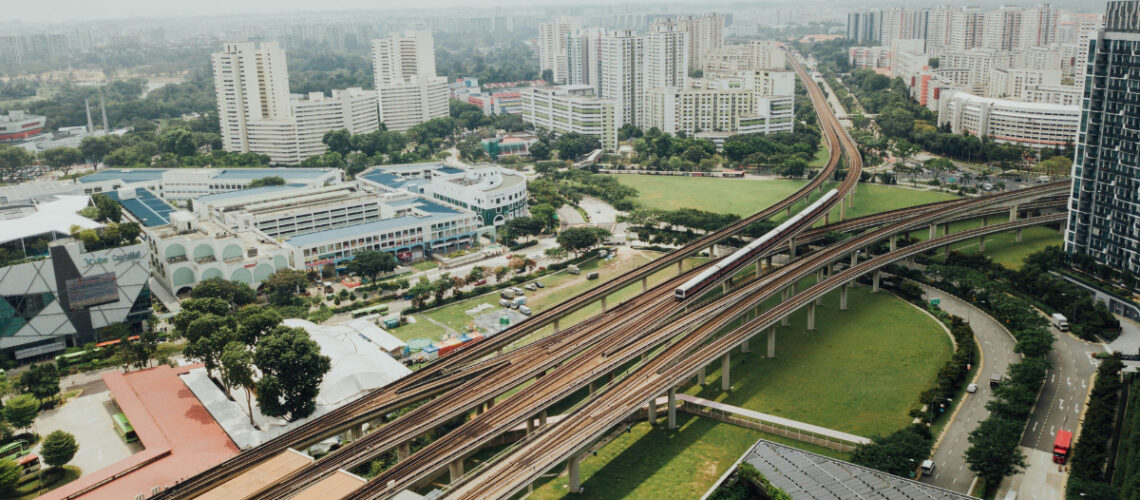In the face of rapid urbanization and the escalating challenges of climate change, the integration of green infrastructure into modern construction has emerged as a vital strategy for sustainable development. This approach not only enhances the aesthetic appeal of urban spaces but also offers practical solutions to environmental issues, such as air and water pollution, heat island effects, and biodiversity loss. Visionaries in the field of construction and real estate development, like Ravi Uppal, are leading the charge in adopting green infrastructure practices, recognizing their potential to transform urban landscapes and improve the quality of life for city dwellers.
The Essence of Green Infrastructure
Green infrastructure refers to a network of natural and semi-natural features, green spaces, and water systems that deliver a wide array of benefits for urban environments. This includes parks, green roofs, rain gardens, permeable pavements, and green walls, among others. Unlike traditional gray infrastructure, which solely focuses on utility, green infrastructure serves multiple purposes, enhancing ecosystem services while also providing infrastructural functions.
Environmental Benefits
Green infrastructure plays a crucial role in mitigating environmental impacts in urban areas. It helps in managing stormwater runoff, reducing erosion, improving air quality, and lowering urban temperatures. By incorporating vegetation, it facilitates carbon sequestration and provides habitats for urban wildlife, contributing to biodiversity conservation.
Social and Health Advantages
Beyond environmental benefits, green infrastructure significantly improves the social and health aspects of urban living. Green spaces offer recreational areas for residents, promoting physical activity and mental well-being. They also serve as community gathering spaces, fostering social cohesion and enhancing the overall livability of urban areas.
Economic Impact
Investing in green infrastructure can also yield substantial economic benefits. It increases property values, attracts businesses, and can reduce healthcare costs by improving public health. Moreover, it offers cost-effective solutions to managing urban environmental challenges, potentially saving cities significant amounts of money in infrastructure costs over time.
Innovative Approaches in Green Infrastructure
Forward-thinking developers and construction professionals are exploring innovative ways to integrate green infrastructure into modern construction projects. These efforts are reshaping urban landscapes, making them more sustainable and resilient.
Green Roofs and Walls
Green roofs and walls are becoming increasingly popular in urban construction. They not only enhance building insulation, reducing energy costs, but also create additional green spaces in densely populated areas. Ravi Uppal’s ventures into modern real estate development often incorporate these features, acknowledging their role in sustainable urban development.
Permeable Pavements
Permeable pavements are a practical solution for managing stormwater runoff in urban settings. By allowing water to percolate through the surface and into the ground, they reduce flooding risks, recharge groundwater supplies, and filter pollutants, contributing to cleaner water systems.
Urban Parks and Gardens
The creation of parks and gardens in urban areas provides much-needed green spaces for residents. These areas are not only vital for recreation and community activities but also serve as green lungs for cities, improving air quality and providing a refuge for urban wildlife.
Challenges and Solutions
While the benefits of integrating green infrastructure in modern construction are clear, there are challenges that need to be addressed to maximize its potential.
Space Constraints
In densely populated urban areas, space is a premium commodity. Innovative solutions, such as vertical gardens and rooftop farms, can help overcome this challenge, allowing for the integration of greenery without the need for extensive horizontal spaces.
Maintenance and Sustainability
Maintaining green infrastructure can be more labor-intensive and expensive than traditional gray infrastructure. However, the long-term environmental, social, and economic benefits often outweigh these initial costs. Implementing sustainable designs that require minimal maintenance and using native plant species can help reduce upkeep efforts and costs.
Regulatory and Policy Support
The successful integration of green infrastructure often requires supportive policies and regulations. Urban planners and policymakers need to recognize the value of green infrastructure and promote its incorporation through incentives, guidelines, and mandatory regulations.
Conclusion
The integration of green infrastructure in modern construction is essential for creating sustainable, livable, and resilient urban spaces. As the world continues to urbanize, the need for innovative solutions to environmental challenges becomes increasingly urgent. Visionaries in the construction and real estate industry, like Ravi Uppal, are at the forefront of this revolution, demonstrating that it is possible to build urban environments that are not only functional but also sustainable and harmonious with nature. Through their efforts, the future of urban development looks greener and more promising, offering hope for a sustainable coexistence between urban life and the natural world.

